A discovery that may save Bara Katra
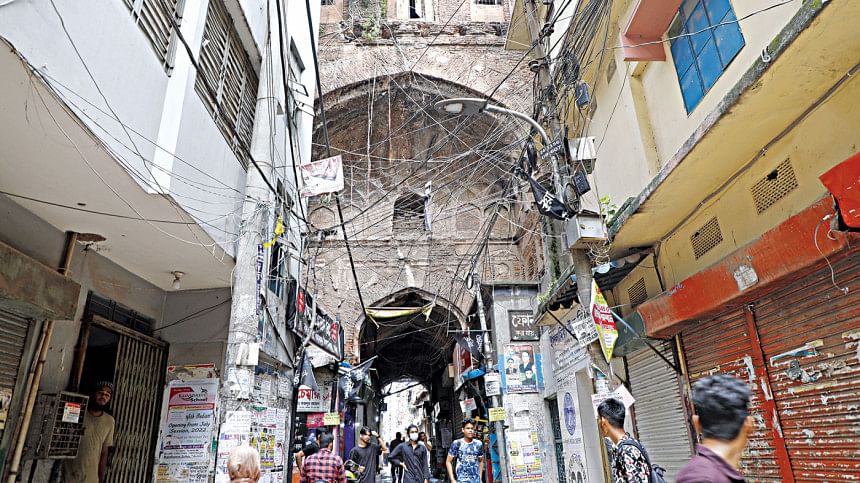
An exciting new discovery by researchers has raised the hope of saving one of the most important heritage sites of Dhaka – the Bara Katra, a Mughal-era palace built for a prince and later turned into an inn for travellers.
The historic stone inscription discovered by Committee for Commissioning Books on Architecture (Dhakar Sthapotto Bishoyok Grontho Pronoyon Committee) is the only testament of ownership of Bara Katra, an ancient site that has been left in neglect and at the mercy of those occupying it.
The organisation stumbled upon this precious artefact while researching ancient stone and copper inscriptions found in Dhaka. The stone inscription was found in Bangladesh National Museum and, after examining it, the researchers realised that it was the original stone inscription on the north gate of the palace.
During the Mughal era, Bara Katra was used as the caravanserai for travellers and merchants. However, its occupants changed over time. Some of the subadars of the late Mughal era also resided in this palace.
The inscription clearly declares Bara Katra and the 22 shops adjacent to the palace as 'waqf' property.
Waqf property is an inalienable charitable endowment under Islamic law. Eminent architectural historian and president of Arch Asia, a representative body of Asian architects, Professor Dr Abu Sayeed M Ahmed said, "According to the law, waqf property can never be owned by any individual. The stone inscription of the northern gate of Bara Katra testifies that Bara Katra is in no way a private property."
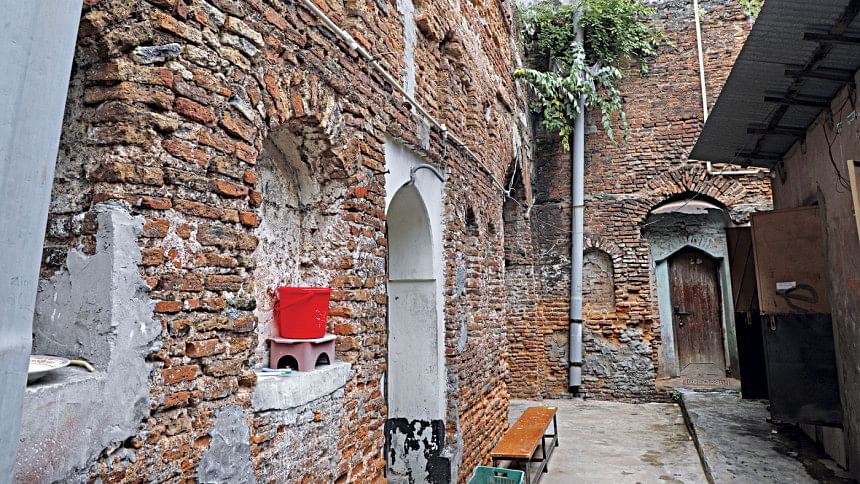
However, the current occupants of Bara Katra are claiming that they are owners of this historic place.
According to the Committee's research, renowned author, researcher and chronicler Hakim Habibur Rahman obtained the historic stone inscription at the end of the British Raj era. However, Rahman and his son never revealed anything about this precious collection before handing it over to the national museum.
"The committee has identified the historic stone inscription as a part of its research work. The committee has further discovered four stone inscriptions about Dhaka currently stored in different museums which were also considered lost," Professor Dr AAMS Arefin Siddique, chairman of the committee and former vice chancellor of Dhaka University, told The Daily Star.
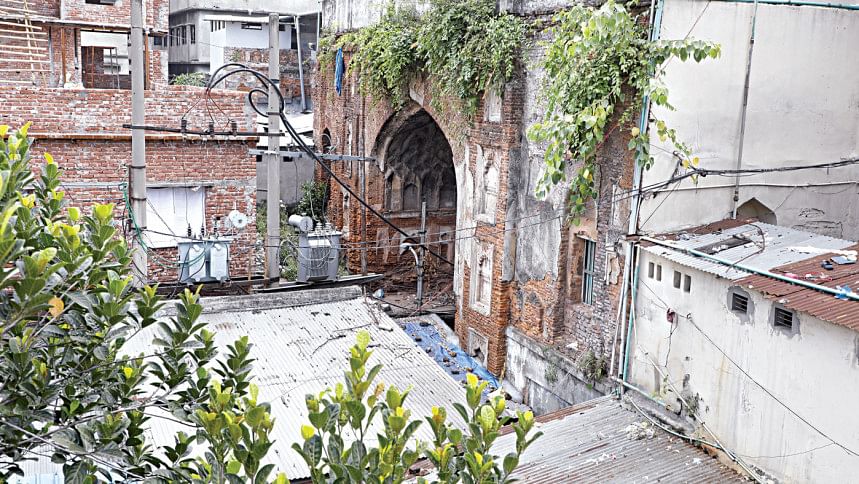
A team of researchers led by Mawlana Muhammad Nuruddin Fatehpuri identified these lost artefacts and deciphered the Arabic, Persian and Urdu inscriptions.
According to sources, two stone inscriptions were attached to Bara Katra's two main gates. The inscription on the southern gate stated the year of its construction and the northern gate's inscription was about the endowment of the property.
While the northern gate has become dilapidated, the southern gate of Bara Katra remains comparatively intact.
There is a 18-line poetry written in Nastaliq script in the stone inscription that mentions the construction year of the palace. The inscription was engraved in 18 different black stone tablets which were attached around the dome of the southern gate of the palace.
The stone inscription of the northern gate of the palace was written in prose, in Tughra script. In this script, Abul Qashim Al Hussaini Attabatayi Assemani is named as the architect of the palace.
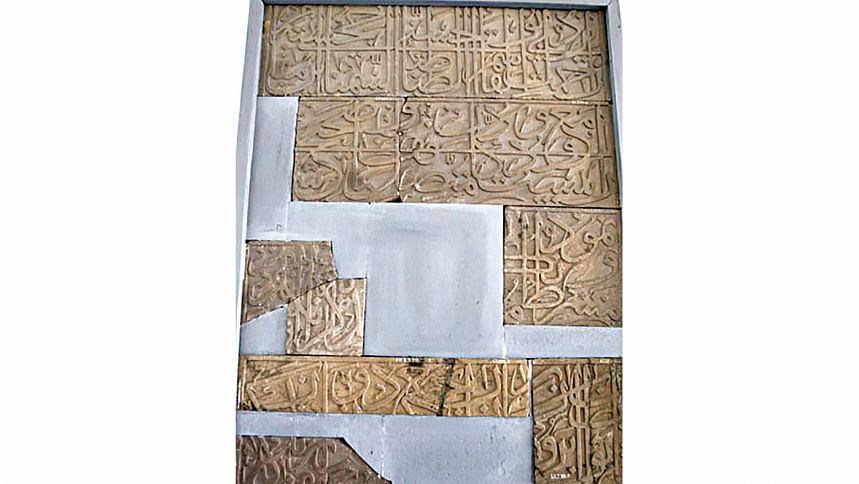
The transliteration and translation of the stone inscription of the northern gate were first published in Charles D'Oyly's book 'Antiquities of Dhaka' in 1822.
While the stone inscription was in the national museum, it was assumed that it was lost. The fragmented pieces of it were preserved in two wooden frames separately, preventing researchers from deciphering them.
Renowned historian Syed Muhammed Taifoor published a book titled 'Glimpses of Old Dhaka' in 1956 where he stated that the stone inscription of the northern gate of Bara Katra was lost. Other historians, referring to Taifoor have also confirmed that the inscription was lost.
As part of discovering Dhaka's history, the committee studied many stone inscriptions preserved in the museums of Bangladesh and West Bengal. During their study, they reviewed the documents about stone inscriptions preserved in the Bangladesh National Museum and contacted the family members who had donated the inscriptions.
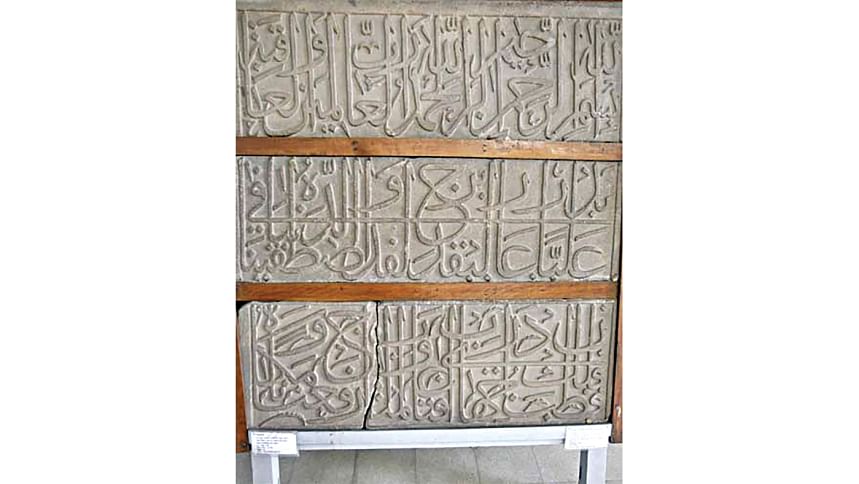
In this process, they came to know that the stone inscription preserved in the museum was the actual stone inscription of the northern gate of Bara Katra.
According to Bangladesh National Museum records, Hakim Irtizar Rahman Khan, the eldest son of Hakim Habibur Rahman Khan donated the stone tablet with the inscription, to the museum on April 14, 1967. It was fragmented into 12 small pieces. Hakim Irtizar Rahman Khan died on July 30, 1980.
"If the fragments of the stone tablet preserved in the museum can be arranged sequentially, then the inscription can be deciphered easily," Mawlana Muhammad Nuruddin Fatehpuri said while explaining why it took so long to find it.
Renowned photographer Mahfuzur Rahman Khan, in a 2015 interview, told the committee that his grandfather Hakim Habibur Rahman Khan collected that stone inscription and his father, Hakim Irtizar got the inscription from his father. However, they could not give any information about how Hakim Habibur Rahman Khan obtained the stone inscription.
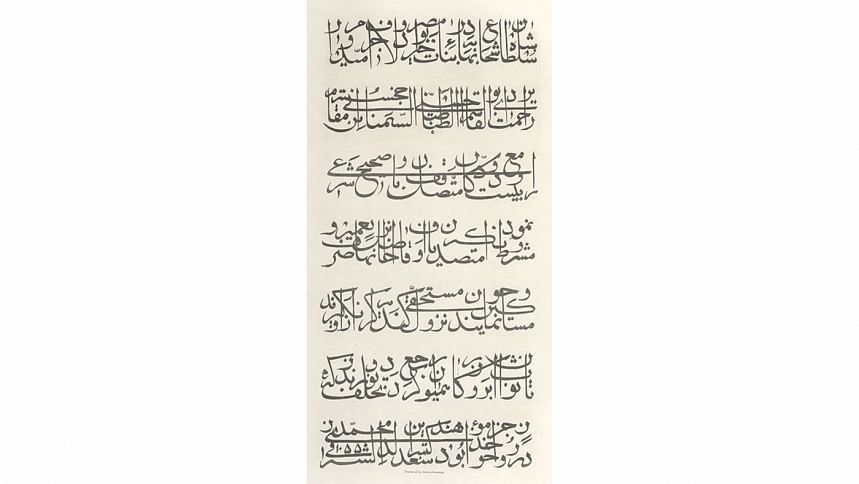
The inscription, written in Persian, read, "Sultan Shah Shuja dedicated himself to different types of charitable activities. Abul Qashim Al Hussaini Attabatayi Assimani endowed this holy place and 22 of its adjacent shops as Waqf. And, according to Islamic laws, he stated a specific condition-that the trustee of the property will spend all the earnings from the property and the adjacent shops for the maintenance of the building and for the welfare of the poor. If an impoverished person arrives here, the person shall be offered free accommodation and shall not be charged for any services so that the trustee will get the rewards on the Day of Judgement. If anyone violates this condition, the person will be held accountable on the Day of Judgement. The engraver of the inscription is Sa'duddin and the inscription was engraved in 1055 Mohammedan Year." (Translated from Persian to Bengali by Muhammad Nuruddin Fatehpuri)
Hakim Habibur Rahman authored a number of books on Dhaka. However, none of them carries any reference to the stone inscription of the northern gate of Bara Katra.
According to researcher Hashem Sufi, Hakim Habibur Rahman collected stone inscriptions from various places in Dhaka and donated them to museums.
During the Mughal era, Bara Katra was used as the caravanserai for travellers and merchants. However, its occupants changed over time. Some of the subadars of the late Mughal era also resided in this palace. Nawabs of Dhaka also used it as their residence before the construction of Nimtali palace. At one point, the palace became a shelter for homeless people.
At present, the southwest part of the palace is being used as a madrasa and the southeast part of the palace is occupied by local goons. They have built numerous shops, factories and warehouses and destroyed much of the original structure of the palace.
Recently, one of the current occupants started to demolish one of the remaining parts of the palace. Fortunately, on September 11, Rakhi Roy, regional director of the department of archaeology, and his team stopped them. Later, Barrister Sheikh Fazle Noor Taposh, mayor of Dhaka South City Corporation paid a visit to Bara Katra and Chhoto Katra. Director General of the directorate of archaeology Ratan Chandra Pandit and architectural historian Professor Dr Abu Sayeed M Ahmed also accompanied him.
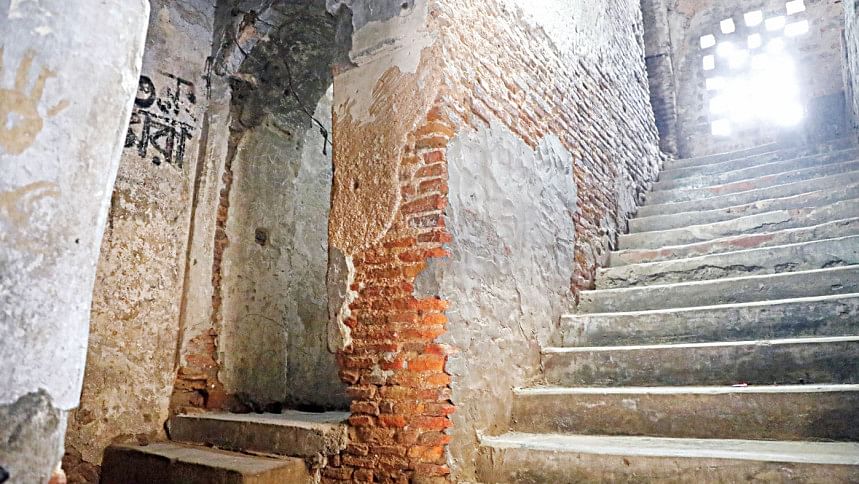
"Bara Katra must be preserved under government custody. It can be given to the custody of the city corporation or the district administration or even to the directorate of archaeology. But it cannot be handed over to any individual," the DSCC mayor said during the visit.
He acknowledged that negligence of government agencies has allowed the palace to be damaged and promised to preserve it.
Professor Dr AAMS Arefin Siddique welcomed the mayor's visit and commitment.
"Bara Katra and Chhoto Katra are two of our greatest heritages and archaeological assets of Dhaka. We should not change their original structure in the name of renovation and modernisation. Renovation works should be done under the supervision of an expert committee so that the original structure of the building can be maintained," he said.
Ratan Chandra Pandit, director general of the directorate of archaeology explained the challenges of preserving the structure to The Daily Star.
"The directorate of archaeology is responsible for the maintenance of Bara Katra. However, it is not the current owner of the land of Bara Katra. Whenever our officials go to renovate the structure, they face strong resistance from the current occupants. The archaeology department took an initiative to acquire the land of Bara Katra in 2009, but it failed. We will take another initiative to acquire the land. We have the expertise and resources to preserve and maintain Bara Katra but we need cooperation from the City Corporation, district administration, waqf administration and local people," he added.
Tarun Sarkar is a freelance journalist and researcher.

 For all latest news, follow The Daily Star's Google News channel.
For all latest news, follow The Daily Star's Google News channel. 



Comments